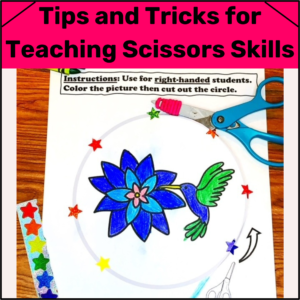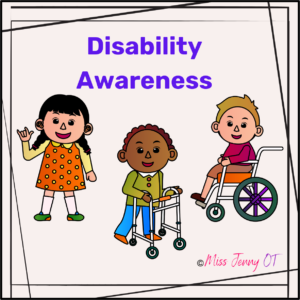Have you been wanting to teach interoception but are not sure how?
Many people have heard the term “interoception” but don’t know how to teach interoception to kids. Interoception is the missing piece that connects SEL curriculums to ability to self-regulate and use strategies. Once kids can identify their interoceptive signals, they can utilize strategies they have learned.
What are the “Hidden Senses”?
Most people are familiar with the 5 “senses” that most humans have (sight, hearing, touch, taste, and smell), but have you heard of the hidden senses?
The Vestibular system is one of the hidden senses. It helps to detect movement. The Proprioceptive system helps to detect things like force needed to do activities. These senses are not the focus of today’s blog, and that is a very simplified explanation of them both.
Interoception is known as the 8th sense. This sensory system is in our inner organs and skin (touch is generally when a person is touching something and can feel its properties, the interoception sense from the skin is noticing properties of the skin such as warm, wet, or sweaty). The organs that are often discussed when thinking of teaching interoception are the brain, heart, lungs, muscles, bladder, bowel/rectum/anus, and stomach.
Why Teach Interoception?
The purpose of teaching interoception is the connection between it and our emotions. For example, when I am mad, I may notice that my heart is pounding, my muscles feel tense, and my face feels hot. If I can notice these sensations and connect them to realize that I am mad, I can then utilize strategies to calm down.
Start with Assessment
When teaching interoception, it is important to assess the person who will be learning to determine their current ability to notice various interoceptive signals, their ability to communicate understanding of the material, and their ability to communicate the sensations that they notice. Using an AAC device can be appropriate if it has enough sensory words programmed into it. If not, it may help to reach out to the person who programs it to discuss potentially adding words. In addition, if a person is working with a speech therapist on communication, it can be helpful to consult them regarding the person’s communication.
Teaching Order
Once you have your baseline, it is recommended to start with external body parts first. Depending on the person, I may start with their hands and/or feet due to being potentially less invasive. I like to start with having the person put their hands under running water and discuss the temperature (change it between cold to hot to see differences), and wet vs dry. This helps the person begin to understand the process of noticing their signals.
After that, we will go through the different areas (eyes, ears, taste, touch, smell, and skin). Once they can notice and express their sensations, we begin the inner ones. I usually start with heart and lungs because I can have kids jump around to notice both.
For bowel and bladder, depending on the age of the child and potential medical needs, the process may be different and is not the focus for today’s post.
Introducing Links between Sensations and Emotions
As we are doing the experiments and noticing our sensations, I begin to introduce the concepts of connecting our sensations to our emotions. For example, when we talk about our hands, I may mention that mine shake when I am nervous or hungry. When discussing our breathing, I talk about times that I notice mine increasing.
As we are able, I help the person make connections to their emotions. We will talk about sensations some people might feel with certain emotions then what it looks like for that person. We create charts or drawings for the child to label to help them remember.
Final Steps
One of the final steps, but also done ongoing, is to determine when and what strategies they might use as needed. If a student determines that during math class they notice their breathing gets faster and their head gets fuzzy, they might need to use a “I need help” card, or take a break if frustrated.
Teaching interoception can be a complex activity and takes weeks, if not months or years. This is a brief introduction. For more information, click the picture for a free teaching guide.









